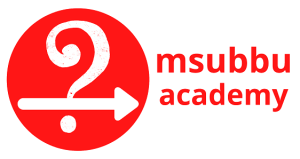MT-Class-3-Summary
06-July-2025
Distillation
Quick Recap
The meeting began with MSubbu welcoming attendees and discussing the website's features and upcoming course schedule, including various subjects and revision sessions planned for the coming months. The main portion of the meeting focused on a detailed lecture about distillation processes, covering fundamental concepts, problem-solving methods, and the McCabe-Thiele approach for continuous multi-stage distillation. The session concluded with a discussion about distillation column design, website features and functionality.
Next Steps
- Students: Spend minimum 1.5 hours daily on solving GATE problems
- Students: Review and practice questions from BK Dutta book for Mass Transfer topics
- MSubbu: Start Chemical Reaction Engineering classes from next Thursday after completing Mass Transfer
- Students: Attend peer discussion sessions regularly to interact with seniors and learn from their preparation
- Students: Prepare for Mathematics and General Aptitude modules scheduled for September
- MSubbu: Arrange two more peer discussion sessions for mass transfer before completing the subject
- Students: Utilize the website features including tags, discussions, and test sections for better learning
- MSubbu: Prepare for fast track revision sessions starting from September
SUMMARY
Website Features and Academic Schedule
MSubbu welcomes the attendees and thanks them for joining, particularly acknowledging a student for regularly attending peer discussion sessions. He announces plans to explain the website's features after the class, including how to use the tag feature. MSubbu outlines the upcoming schedule, including the completion of Mass Transfer and the start of Chemical Reaction Engineering (CRE) and Process Control subjects by August 14th. He also mentions future plans for Math, General Aptitude, and revision sessions in September, followed by fast-track sessions from October to November. MSubbu emphasizes that students have access to various study materials and tests, encouraging them to utilize these resources effectively.
Distillation Fundamentals and Problem Solving
The instructor discusses various aspects of distillation, covering vapor-liquid equilibrium, batch distillation, flash distillation, and continuous multi-stage distillation. He explains how to solve problems related to these topics using thermodynamic principles, material balances, and energy balances. The lecture covers the use of relative volatility data, Raoult's law, and equilibrium ratios to determine compositions in distillation processes. The instructor emphasizes the importance of understanding fundamental concepts and equations to solve distillation problems efficiently. He also mentions that some questions may provide necessary equations, while others may require students to recall them from memory. The lecture concludes with an introduction to the McCabe-Thiele method for continuous multi-stage distillation, noting that graphical representations can be useful but many problems can be solved algebraically using relative volatility data.
Minimum Reflux Ratio and Feed Quality
The discussion focuses on determining the minimum reflux ratio and feed quality in a distillation column. MSubbu explains that the minimum reflux ratio can be found using the intersection point of the \(q\)-line (feed line), equilibrium curve, and enriching line. He demonstrates how to calculate this using the distillate composition and the intersection point. For feed quality, MSubbu explains that it can be determined from the slope of the \(q\)-line, which is related to the q value. The \(q\) value indicates the thermal condition of the feed, with \(q=1\) representing saturated liquid, \(q=0\) representing saturated vapor, and values in between representing partially vaporized feed. MSubbu also mentions that \(q>1\) indicates subcooled liquid, while \(q<0\) indicates superheated vapor.
Distillation Column Design Analysis
The discussion focuses on solving problems related to distillation column design using analytical methods. MSubbu explains how to calculate the reflex ratio using data from the enriching line, including the distillate composition and the intersection of the feed line with the equilibrium curve or operating line. He emphasizes the importance of understanding the relationship between liquid and vapor compositions on adjacent plates in the enriching section. MSubbu also covers the concept of open steam distillation and how to determine the slope of the stripping line at minimum reflux. The lecture concludes with a brief overview of reflux ratio and boil-up ratio in distillation columns.
Website Navigation and Study Tools
Professor Subbu explains the features of his website to students, focusing on how to use tags and access course content. He demonstrates how to navigate the site, find video lectures, and use the tagging system to locate specific topics. The professor also shows students how to add discussions to problems, take practice tests, and access theory content for each topic. He emphasizes the importance of regular practice, suggesting students solve 4-6 problems daily to improve their performance in exams like GATE. Subbu also mentions that "Open CH" course available to all subscribers, which includes additional resources such as book collections and instructional videos on using the site effectively.
MSubbu encouraged students to aim for a high score in the GATE exam, suggesting it will open opportunities in public sector industries.
